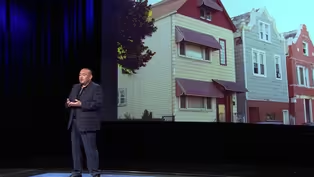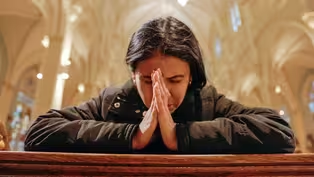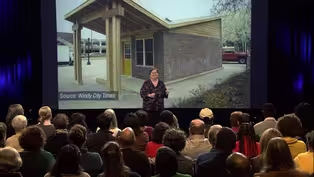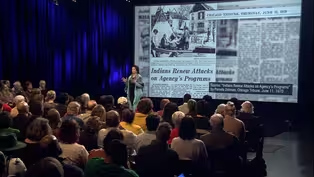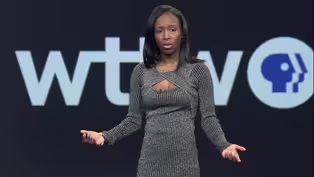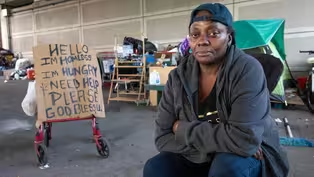FIRSTHAND
FIRSTHAND Talks: Invisible No More
Clip: Season 6 | 8m 43sVideo has Closed Captions
Shelly Tucciarelli explores affordable housing development for Native Americans.
Shelly Tucciarelli,Executive Director at Visionary Ventures, explores the foundation of the first affordable housing development for Native Americans in Chicago’s history.
Problems playing video? | Closed Captioning Feedback
Problems playing video? | Closed Captioning Feedback
FIRSTHAND is a local public television program presented by WTTW
FIRSTHAND
FIRSTHAND Talks: Invisible No More
Clip: Season 6 | 8m 43sVideo has Closed Captions
Shelly Tucciarelli,Executive Director at Visionary Ventures, explores the foundation of the first affordable housing development for Native Americans in Chicago’s history.
Problems playing video? | Closed Captioning Feedback
How to Watch FIRSTHAND
FIRSTHAND is available to stream on pbs.org and the free PBS App, available on iPhone, Apple TV, Android TV, Android smartphones, Amazon Fire TV, Amazon Fire Tablet, Roku, Samsung Smart TV, and Vizio.
Providing Support for PBS.org
Learn Moreabout PBS online sponsorship(chime tone) (audience clapping) - Shekoli.
Hello everyone.
I am a proud member of the Oneida Nation of Wisconsin.
My reservation is up near Green Bay.
Like many Native Americans, I did not grow up on my reservation.
I grew up in a small town in Indiana in the 1970s, and at that time you did not advertise that you are a Native American.
You just wanted to fit in like everybody else.
We really are still a healing community.
From the disease that was brought over from other countries, removal from our homelands, boarding schools, and the Indian Relocation Act, it has had devastating effects on our community for generations.
There's been a long history of tribal displacement.
Some communities displacement is a threat.
For the Native American community it is a historical fact.
We uniquely understand the true meaning of homelessness.
The Chicago Treaty of 1833, removed the majority of Native Americans from the Chicago area.
It wasn't until the 1950s, with the Indian Relocation Act, that the government was trying to eliminate reservations, so they wanted to assimilate Native Americans into big cities.
So I had a lot of other family members that moved to Chicago.
I can remember driving to Chicago, and stopping to visit family members in Chicago and in Milwaukee, and at that time, the housing conditions were not very good.
There were some tribal members that did go back to the reservations.
And some of the members that stayed, lived in poverty and suffered from homelessness, and the lack of services, and also that cultural identity.
It really was a cultural shock to move from a reservation to a big city like Chicago.
That is the main reason that the American Indian Center was established in 1953, in order to provide those services to the families that remained.
They would have powwows, and that helped provide the connection to other Native Americans in the Chicago area.
They would provide information on social services, local jobs, and affordable housing that was available.
We are now in the third and fourth generation of families that live in Chicago.
The American Indian Center services about 150 to 175 different tribal nations, and continues to provide those essential services that we need for our community.
Despite the promises in the 1970s, we continued to have horrible living conditions, and a high rate of homelessness.
In order to try to have a voice, and highlight these issues, The Native American community organized a sit-in near Wrigley Field.
They put up a tepee, and it was called the Chicago Indian Village.
They were protesting against inadequate housing, and services for their community.
In order to get them to take the tepee down and leave, again, there was a promise of housing.
And that was over 50 years ago.
We have in the past, been referred to as "the invisible race."
Homelessness in the native community can be hard to identify, 'cause many members will live temporarily with family or friends, in essence, couch surfing, until they land on their feet.
It is hard to find data on homelessness for our community, because Native Americans in most data sets are referred to as "other," or an asterisk.
We need to be counted just like everyone else, in order to have those numbers, to apply for grants, and apply for other funding sources.
We still have many community members that do not trust the government, and will not complete the census.
It is estimated that we have about 32,000 native Americans that live in the Chicago area, but we know there are many more than what the census numbers report.
There has been a long history of tribal displacement, housing discrimination, exclusionary policies, that have been barriers to housing for the Native American community.
It is important to understand that if you live on your reservation, the tribe helps to fund housing, and support housing for the community.
But here in Illinois, we have no federal reservations.
The Prairie Band of the Potawatomi are currently working with the state to regain some of their homelands.
We will finally have some tribal support here in the state of Illinois.
That tribal support is gonna be so- (audience claps) Thank you.
That tribal support is gonna be so important for our housing and advocacy efforts in the future.
The University of Illinois in Chicago, was trying to put together a report on the urban Native American community for four years.
They could not find the information that they needed.
They reached out to the Chicago American Indian Community Collaborative.
They are a network of 16 different Native American organizations and programs that are working together to improve the conditions for the Native American community in Chicago.
Our organizations worked with UIC for several months, and provided that information that they needed, to complete that report in 2019.
That report was exactly what we needed, because it highlighted our need for affordable housing.
So I took it to Illinois Housing Development Authority, I took it to the city's Department of Housing, and I commend the Department of Housing.
Because at the same time, they were reviewing all the projects that they had completed, with a racial lens, and they realized, they had done no housing for the urban Native community.
They actually reached out to the American Indian Center to see how they could help develop some housing.
The executive director reached out to me, of the American Indian Center, because at that time I had been in housing for over 25 years.
I was able to set up a meeting with the Department of Housing.
That was what we needed to get the ball rolling.
We are all working together to end homelessness in our community.
Many members of the collaborative, the Chicago Public School's Native American Program, the American Indian Center, the Saint Kateri Center, and the American Indian Health Services of Chicago, they are our first line of defense to help address community members that are homeless, or on the verge of becoming homeless.
Visionary ventures and full circle communities, they are joint venturing on the first affordable housing for the urban Native American community in Chicago's history.
The site is located at 2907 West Irving Park Road, and it will have 45 units of 100% affordable housing.
The units will range from studios all the way up to three bedrooms, because we want it to have that intergenerational component.
The reason that we chose this site, because of its close proximity to the American Indian Center up on Kimball, the Indian Health Services over on Montrose, the Saint Kateri Center that provides youth and elder programming for our community.
Also, the close proximity of the Chicago River is so important, because water is life for our community.
We received a grant from the Chicago funders together, to end homelessness, to help build our infrastructure that we need, as we work with community leaders and members, to develop initiatives related to homelessness, and find those preventive solutions for our community.
We know there is a brighter future.
This housing is truly history in the making for our urban Native American development.
Thank you everyone.
(audience claps) (chime tone)
FIRSTHAND Talks: The Power of Housing
Video has Closed Captions
Clip: S6 | 7m 39s | Jose Muñoz shares his childhood experience facing homelessness and food insecurity. (7m 39s)
FIRSTHAND: Homeless — The Migrant Experience Trailer
Preview: S6 | 29s | WTTW shares five migrant stories, revealing why they left home, their journeys, and their struggles. (29s)
FIRSTHAND Talks: Tiny Homes, Big Solutions
Video has Closed Captions
Clip: S6 | 9m 34s | Tracy Baim examines the use of tiny homes one possible solution to homelessness. (9m 34s)
FIRSTHAND Talks: Invisible No More
Video has Closed Captions
Clip: S6 | 8m 43s | Shelly Tucciarelli explores affordable housing development for Native Americans. (8m 43s)
FIRSTHAND Talks: Finding a Way Home
Video has Closed Captions
Clip: S6 | 5m 21s | Sharday Hamilton shares how public services failed her as a homeless teen mother. (5m 21s)
FIRSTHAND Talks: Building Our Way Out
Video has Closed Captions
Clip: S6 | 9m 20s | Nicole Bahena puts focus on using available funding to create affordable housing. (9m 20s)
Video has Closed Captions
Preview: S6 | 1m 19s | WTTW offers a look at the unique perspectives and challenging experiences of the unhoused. (1m 19s)
Providing Support for PBS.org
Learn Moreabout PBS online sponsorshipSupport for PBS provided by:
FIRSTHAND is a local public television program presented by WTTW
